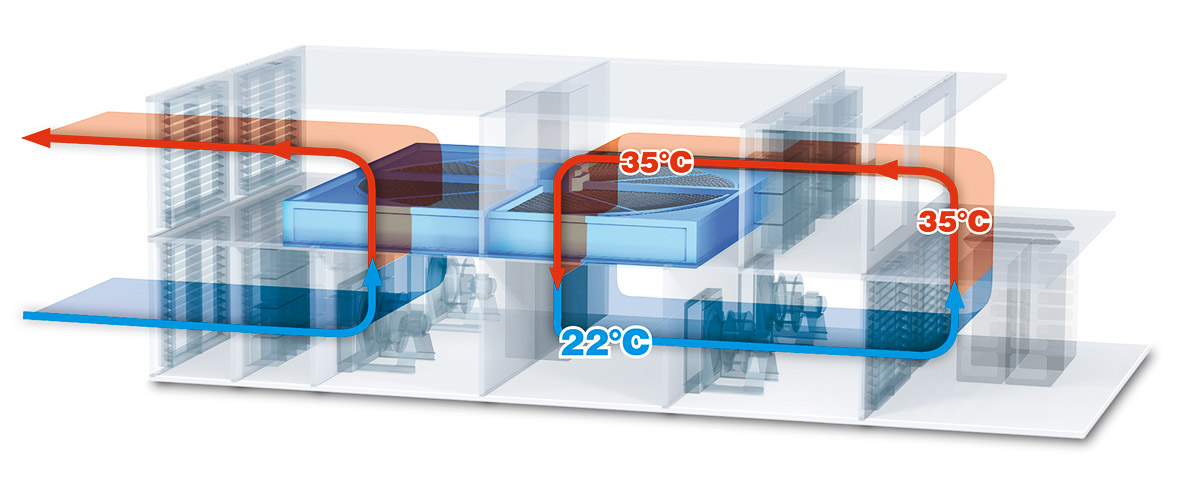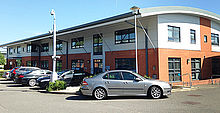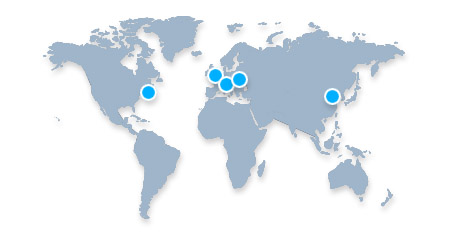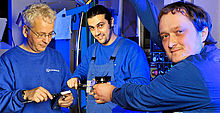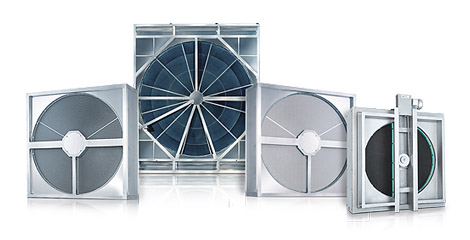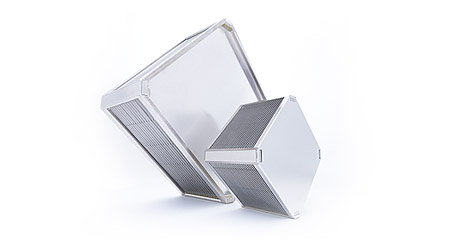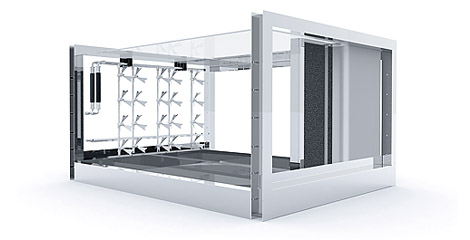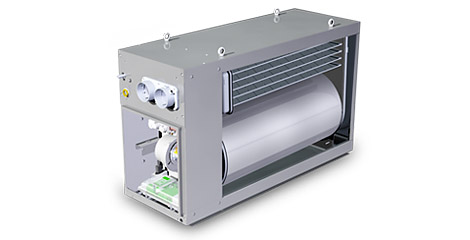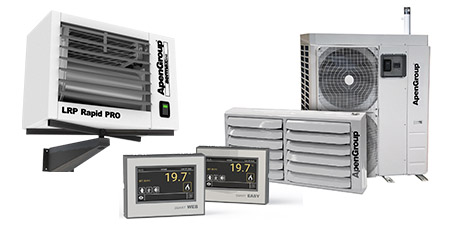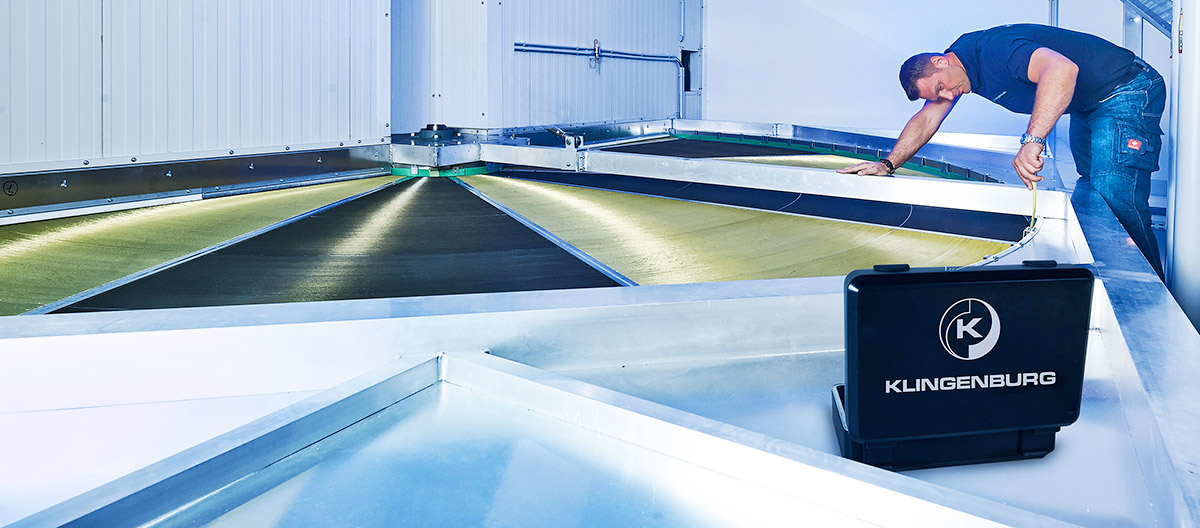
Large-scale IT systems are complex and expensive to cool. As a rule, about a third of the energy consumed by a data processing centre without heat exchangers is devoted to cooling sensitive computers using air-conditioning compressors.
Complete Server-Room Cooling Without Air-Conditioner
Klingenburg rotors reduce the energy consumption required for cooling substantially. In temperate zones such as Western Europe, these rotors can enable data processing centres to run for up to 340 days per year entirely without the use of mechanical cooling systems.
Slashing the cooling energy requirement by up to 70%. thus enabling the operator to save tens of thousands of Euros per year.
Cutting-Edge Technology for Large Air Volumes
Klingenburg rotors were first to make this new technology a global success. The size of heat wheels and air volumes vary according to the cooling capacity required. Rotary heat exchangers can be produced at up to eight metres in diameter.
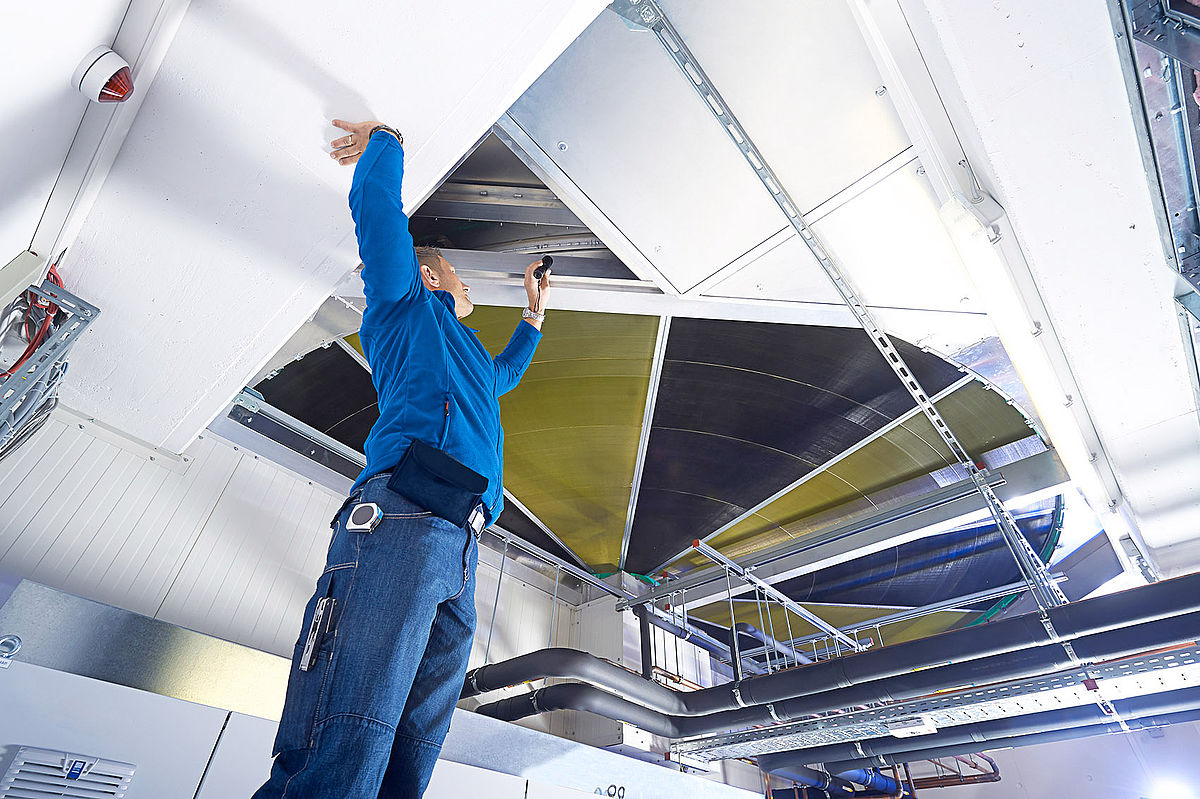
Safe and efficient
As well as high energy savings, this process offers other significant advantages. Since pure air cooling is required here, no water is present in the server room with its sensitive equipment. Compared to cooling via, say, plate heat exchangers, efficiency is significantly higher and pressure loss is lower.
A unique sealing system on and within the heat wheel housing reduces leakages to less than 0.5% of the nominal air volume.
